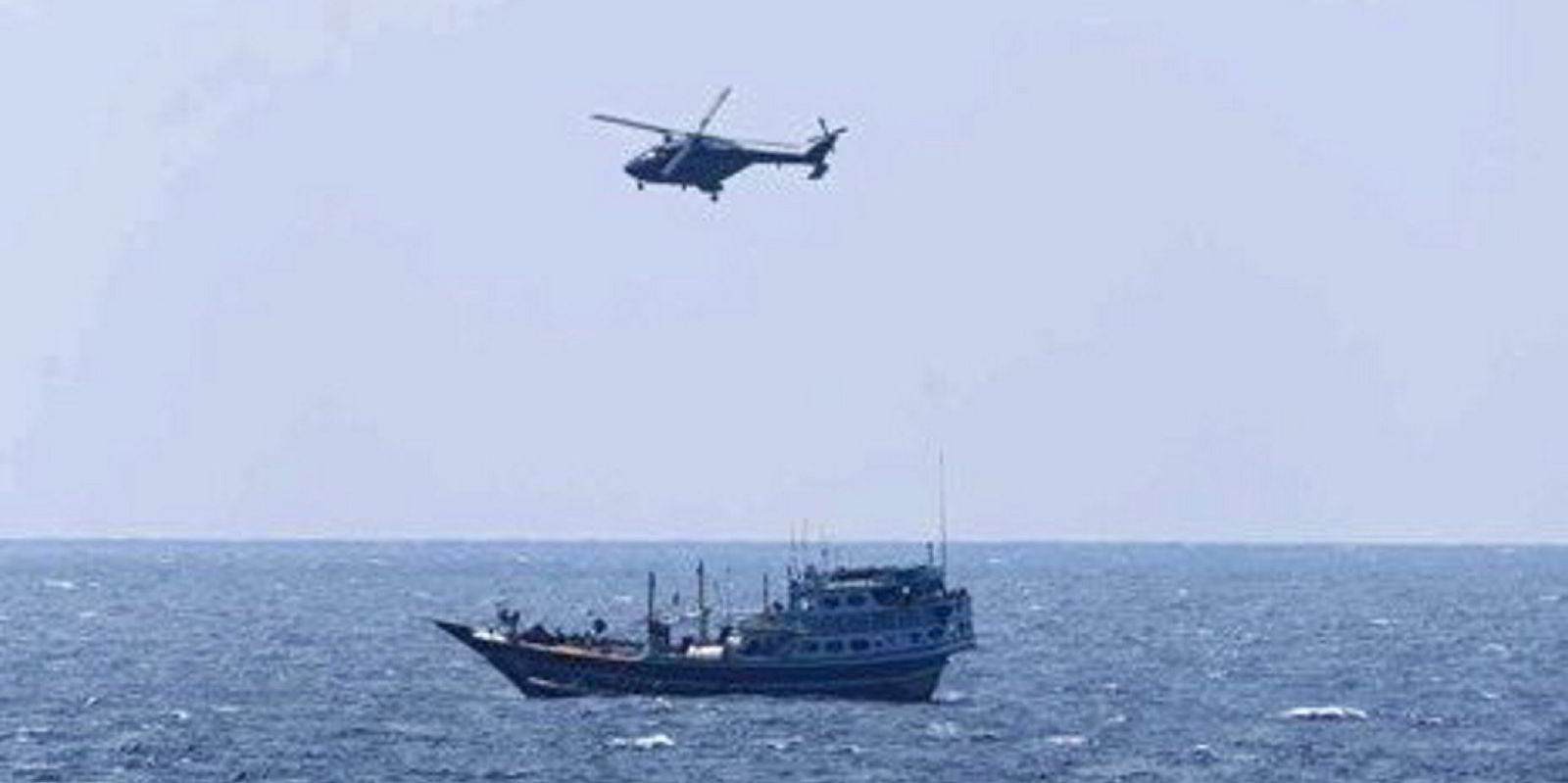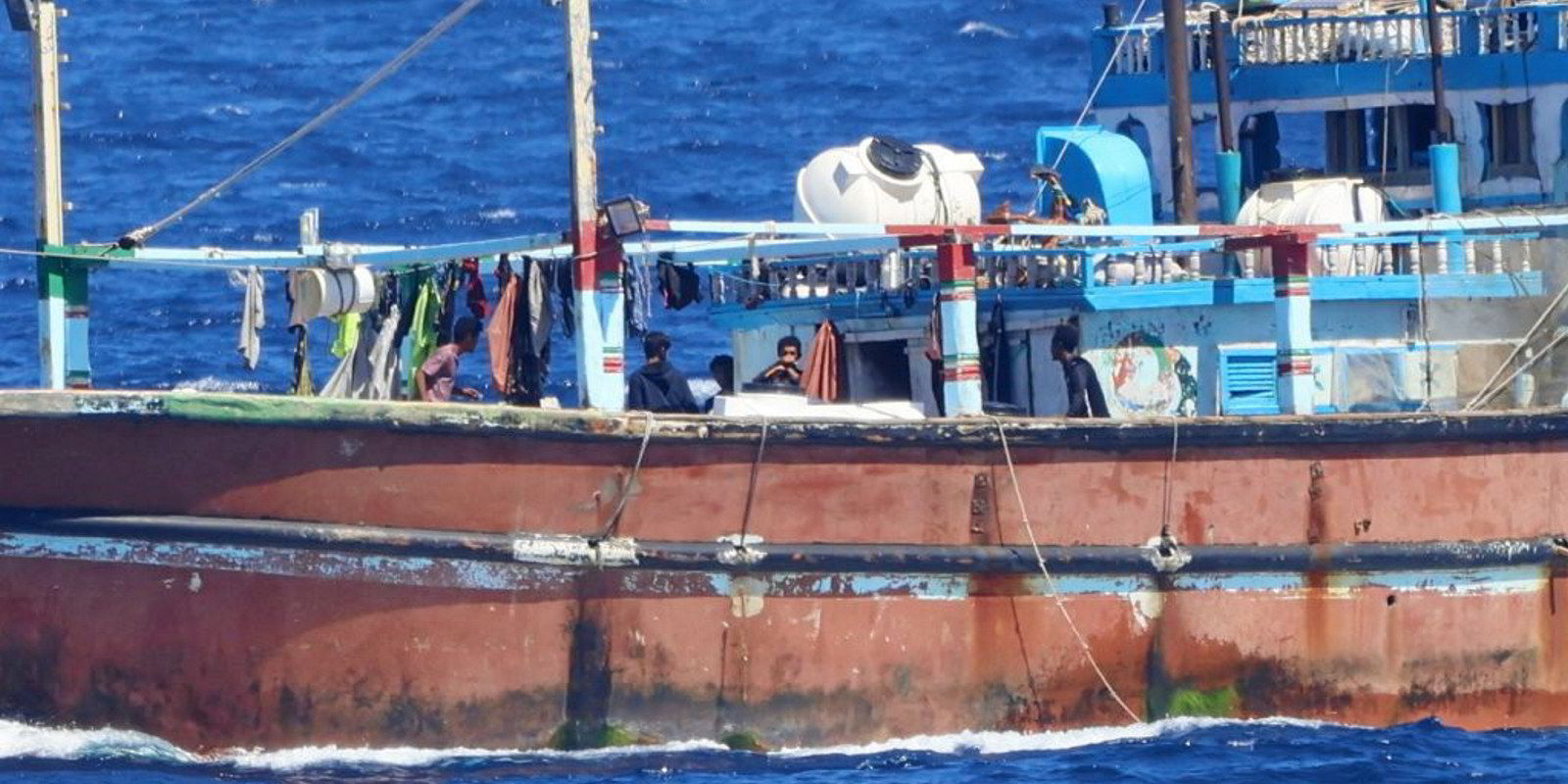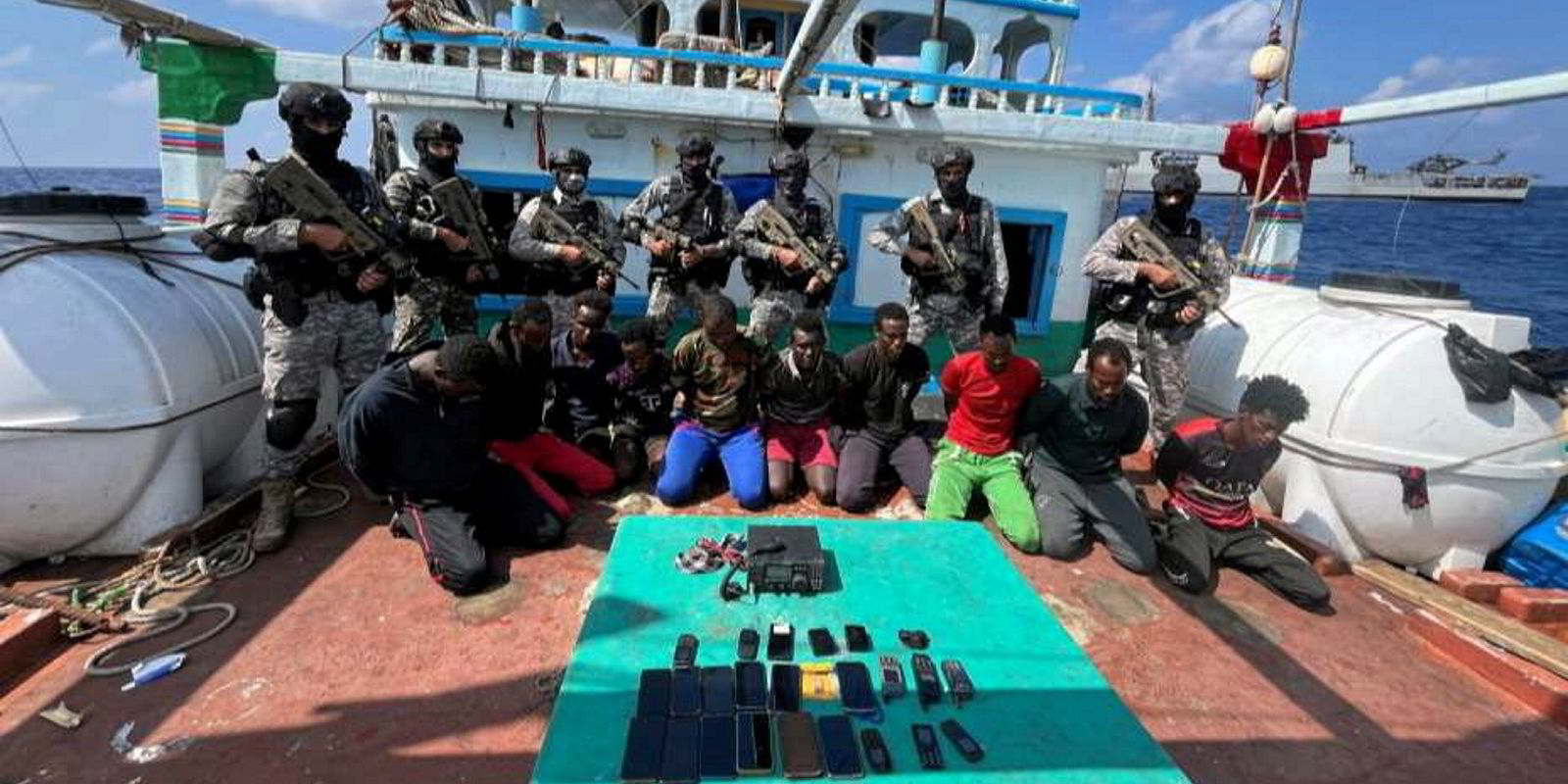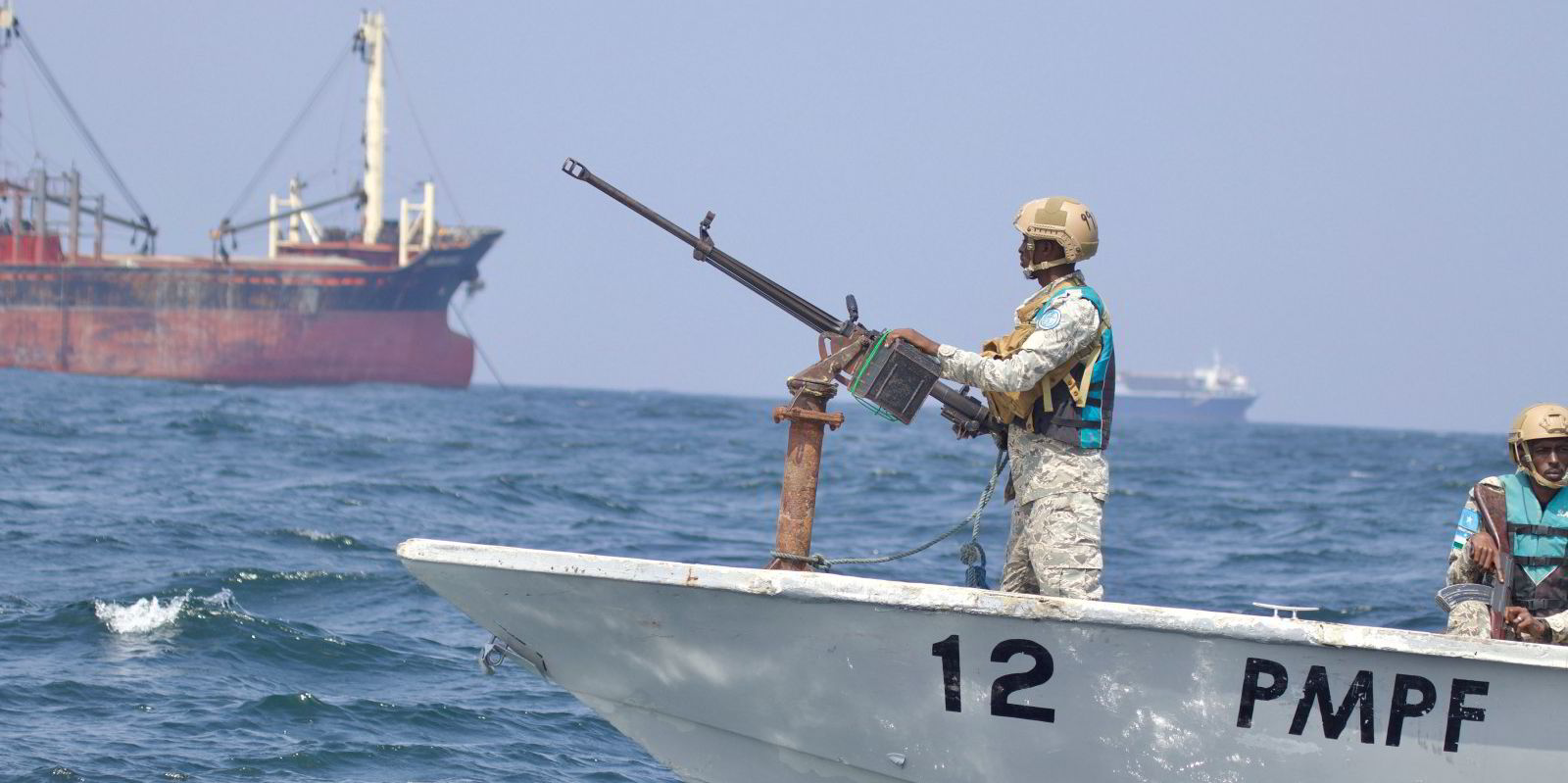Pirates prowling around the Indian Ocean seem to be turning their attention to smaller fishing boats — for ransom or possibly to use them as mother ships for attacks on larger commercial ships.
The navies of India, Sri Lanka and the Seychelles reported three hijackings over the weekend, all of which they ultimately managed to defeat, releasing 42 seafarers and capturing 14 Somali pirates.
The Indian navy pointed out that such intervention “also prevents [the] misuse of fishing vessels as mother ships for further acts of piracy on merchant vessels”.
In the first incident on 28 January, armed intruders boarded and hijacked a Sri Lankan fishing trawler with six seafarers on board, 955 nautical miles (1,770 kilometres) east of Mogadishu.
The Lorenzo Putha-4 was sailing north of the Seychelles when the incident happened. After an initial period in which no contact with the vessel could be established, Sri Lankan and Indian forces tracked it down and intervened.
The crew was rescued and the Somali pirates surrendered to the Seychelles coast guard.
The other two attacks were revealed by the Indian Navy on 29 and 30 January.
Warship INS Sumitra intervened in both incidents to thwart the hijacking of the Iranian-flagged fishing vessels Iman and Al Naeemi.

Thirty-six seafarers were briefly taken hostage on the two boats by Somali pirates, at least 11 of which were captured.
“[The] Sumitra intercepted the vessel [Iman], acted in accordance with the established standard operating procedures to coerce the pirates for the safe release of the crew along with the boat and ensured the successful release of all 17 crew members along with the boat,” the Indian Navy’s spokesman said on X.
In the case of the Al Naeemi, the Indian war ship deployed “coercive posturing... her integral halo and boats” to compel the safe release of the fishing boat's 19 Pakistani seafarers.
This was the third time this month that swift action by an Indian warship caused intruders to give up a piracy attempt and flee or surrender.

On 5 January, Indian commandos took control of the 170,100-dwt Lila Norfolk (built 2006), which had been previously boarded by five or six armed persons in the open sea off the coast of Somalia.
After failing to break into the bulker’s citadel, the intruders abandoned the vessel before help arrived in the shape of the INS Chennai.
Somali piracy, which was believed to have been extinguished after 2017, flared up last November — possibly in the wake of the Red Sea crisis sparked by Yemen’s Houthis.
In the first, and only successful attack so far, a Bulgarian bulker — the 41,600-dwt Ruen (built 2016) — was hijacked on 14 December. The ship is now off the coast of Puntland and ransom negotiations are understood to be underway.
In another recent incident that bears all the hallmarks of Somali piracy, maritime security agencies reported on 27 January that an unidentified merchant ship exchanged fire with assailants on a small craft some 780 nautical miles (1,400 km) east of Hafun, Somalia.
The craft had four armed people on board with automatic rifles and a rocket-propelled grenade launcher.
This article was updated after initial publication to include information about additional attacks(Copyright)





